The rising cost of borrowing
Date
24 May 2022
Share

After a period of record low interest rates, central banks are moving borrowing rates up to try to get on top of the inflation issue. The resulting rise in wholesale interest rates has increased borrowing costs for both business and consumers around the globe.
As a consequence of building inflation pressures, the Reserve Bank of New Zealand began an interest rate tightening cycle in October 2021. Interest Rates are the main tool that the RBNZ (and other central banks globally) has available to reduce inflation pressures. Higher interest costs reduce demand by forcing consumer and business borrowers to spend their cash flow on servicing debt, and for other goods and services, therefore reducing inflationary pressures on those goods and services.
The impact on business interest rates has been very sharp. Business borrowers will usually have a mix of fixed and floating interest rates, with most short-term working capital facilities being on floating rates, and longer-term debt often using fixed interest rates.
Floating interest rates broadly follow the trend of the Official Cash Rate (“OCR”). The OCR was lifted from its historic low level of 0.25% in October 2021, and following yesterday’s 0.50% increase, the OCR now sits at 2.00%. In yesterday’s Monetary Policy Statement the RBNZ outlined an aggressive ramping up of expectations as to how far interest rates will need to keep rising. It now sees the OCR peaking at 3.9% by June of next year. Earlier its pick was for a peak in this hiking cycle of just 3.4%. Now it sees the OCR getting close to 3.4% by THIS December. Floating interest rates for business debt will broadly follow that trend upwards.
Wholesale interest rates that determine longer term fixed interest rates are primarily driven by “Swap Rates”. Longer term fixed rates can, in simple terms, be looked at as the wholesale market expectations of where floating rates will sit at a future point in time. The increase in longer term fixed rates has been sharp and significant. Since August 2021, 5-year swap rates increased from a low of 1.56% to a peak of 4.14% on the 5th of May, an increase of over 2.5%. These increases impact the borrowing costs for new fixed rate debt taken on by business borrowers. For example, many bank and finance company asset finance transactions are funded over five-year fixed rates. If we use the example of a business borrowing $600,000 for a new truck and trailer unit, and repaying this over five years, their monthly payment cost would be around $700 higher than if they had settled the same transaction in August 2021. Over the course of the loan, that is $42K in additional interest cost to fund that single asset purchase.
The impact on residential mortgage borrowing is also quite dramatic and will have a very real impact on many New Zealand households. The vast majority of residential mortgage debt is on short term fixed rates of one or two years. As these rates come off their current fixed rates and re-fix over the course of 2022, households will face increased debt servicing costs. By way of example, the average of the two-year fixed mortgage rates charged by the major banks increased to 4.96% in April since it hit a record low of 2.52% in May last year. A borrower with a $500,000 mortgage, will face an almost doubling in annual interest costs, with interest costs increasing by $234 per week. That is a lot of cash that will come out of discretionary spending.
Although interest rates are moving from historic lows to rates that are still modest by historic New Zealand standards, it is the quantum of increase in dollar and percentage terms that is quite dramatic.
Like central banks around the world, the RNBZ faces a tough balancing act in months to come. They need to ensure inflation does not get out of control, yet many of the factors driving inflation are global and beyond their control. Interest rate increases in New Zealand will do nothing to reduce the inflationary impact of Russia’s invasion of Ukraine, having driven up global oil prices. House prices in New Zealand are already showing definite signs of falling from their peak, and investment balances will have suffered from share market declines. These factors do tend to make consumers feel less wealthy and reduce demand. Like all central banks the RBNZ will be wanting to strike the right balance between slowing demand enough to reduce inflation, without moving too far and driving a recession.
As a business borrower, there is little you can do to reduce the impact of rising interest rates on your business. Businesses can take some comfort that while recent increases in interest rates have been sharp, current rates are not high by historic New Zealand standards. They are more a return to what are historically “normal” rates. Moving debt from floating to fixed interest rates has the benefit of providing certainty of future interest costs. However, with fixed rates currently much higher than floating rates, there is truly little incentive to do so. What is more important is that businesses ensure their debt repayment structure is right. Cash flow is more important than interest costs in terms of business viability and, if cash flow tightens, your Finance New Zealand Business Partner can help you assess options to reduce loan repayment pressures.
As Finance New Zealand works with a wide range of bank and finance company funding partners, the rapid rise in interest rates has shaken up the landscape. Each lender has their own source of funding and cost structures so some have been more impacted than others in terms of the interest rates they offer the market. Some lenders have passed on all the wholesale interest changes, whereas others have absorbed some of these cost increases to try to drive more business in their direction. They may have had a source of funds for their own business that is not directly impacted by wholesale rate movements. Should the economy slow, we expect each lender to react differently. Some will take a more aggressive stance to try to win a greater share of the market, whereas others will take a more cautious approach to reduce their risk exposure. As we collaborate with our clients to organise new debt funding, or to restructure existing debt, we are able to advise the most suitable funder based on a range of factors, including who is offering the lowest interest rates at a particular point in time.
Similar Posts
27 August 2025
Cash flow pressure? We can help you keep your business moving forward.
During this challenging economic climate, reviewing your performance and uncovering cost-saving opportunities is a savvy move that ensures you maintain strong cash flow and business resilience.

14 July 2025
Navigating property finance with lower CVs? We can show how to navigate the changing market and position your lending for better outcomes.
With capital values softening across parts of New Zealand, many borrowers are finding that lower CVs can impact how much they can borrow — especially when property is being used as security. While CVs don’t directly set lending limits, they influence how lenders assess risk and scale your available equity. At Finance New Zealand, we help clients navigate these challenges by working with multiple lenders, using alternative forms of security, and structuring finance that supports long-term growth — even in a tighter lending environment.


Page Links
Contact us
Finance New Zealand Limited L11 BDO Tower, 19-21 Como Street, Takapuna, Auckland 0622 PO Box 65164, Mairangi Bay 0754 T: (09) 222 0320E: info@financenz.co.nzMember of


Proud Sponsors of Auckland Rescue Helicopter Trust
Copyright Finance New Zealand Ltd 2025



